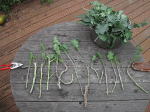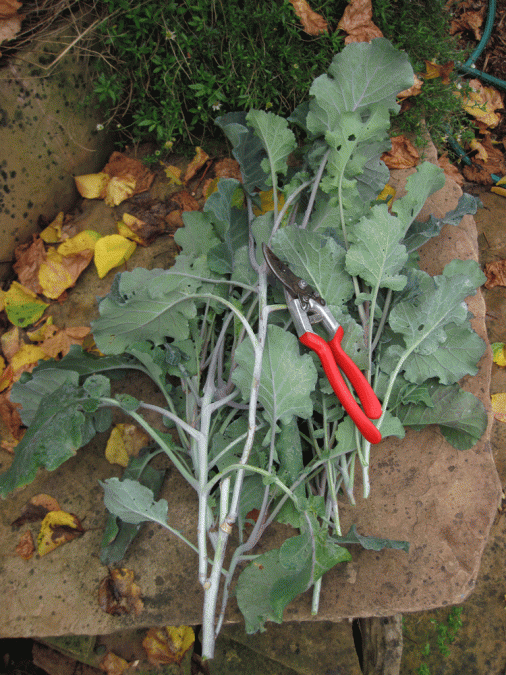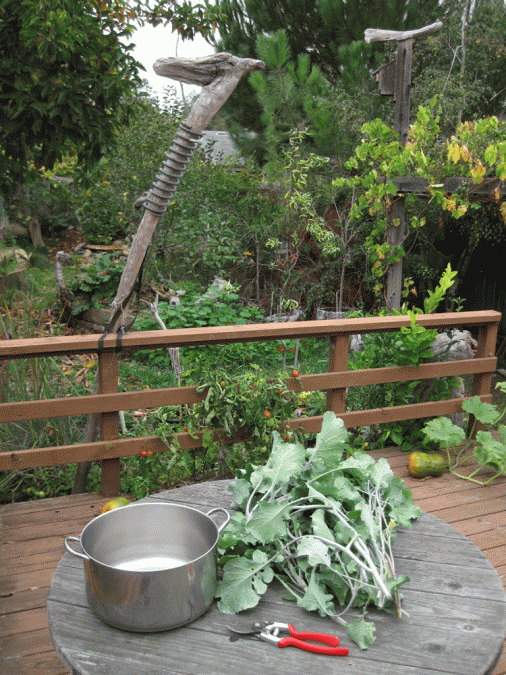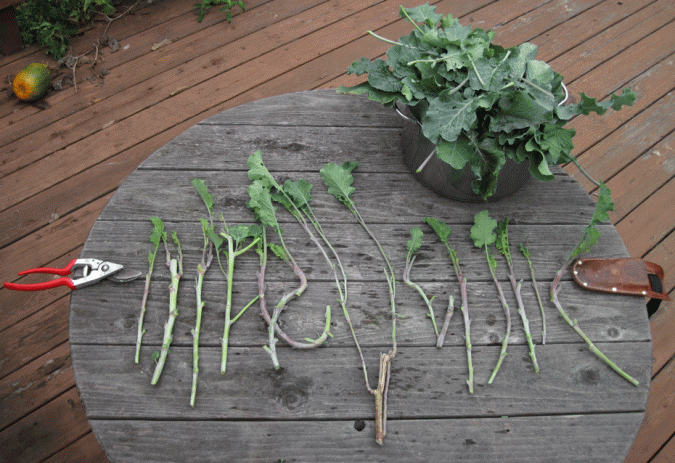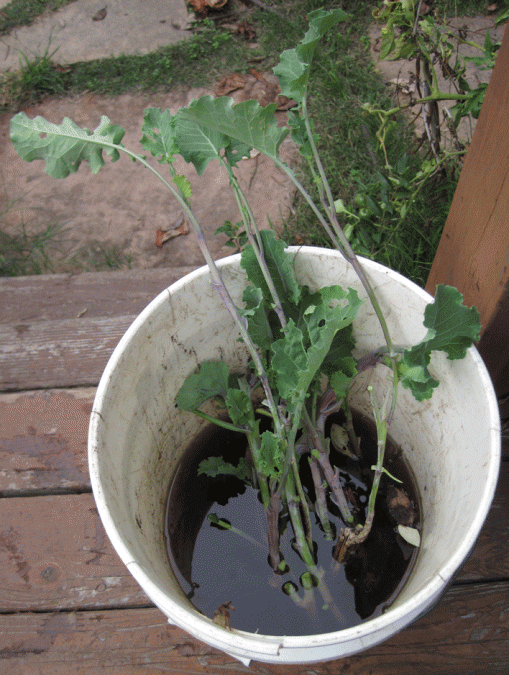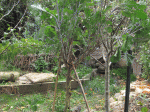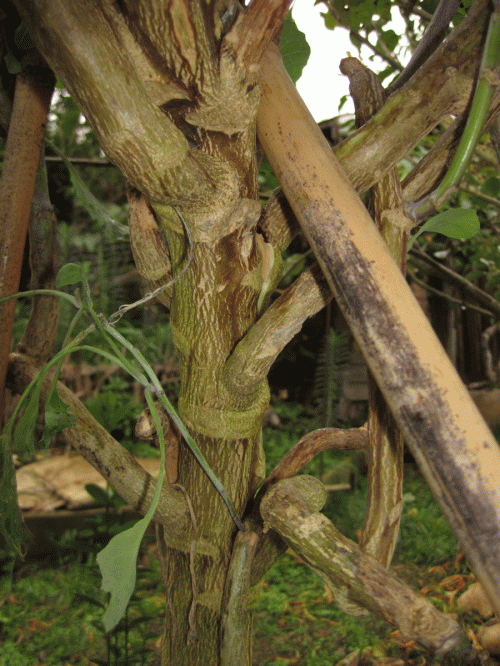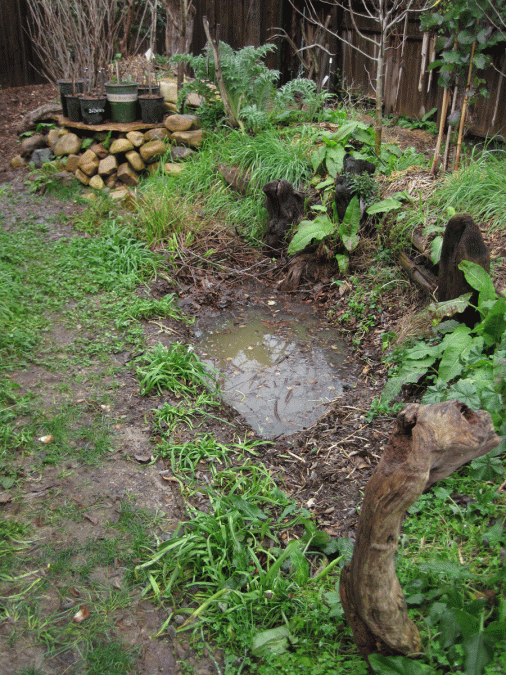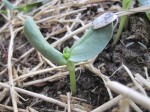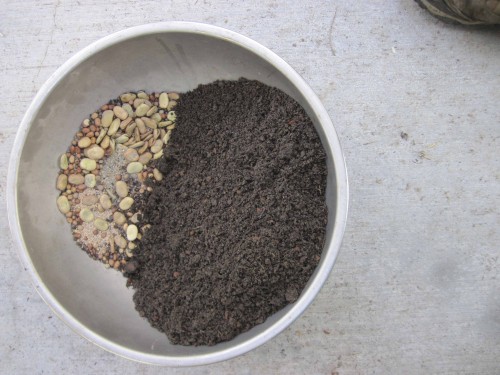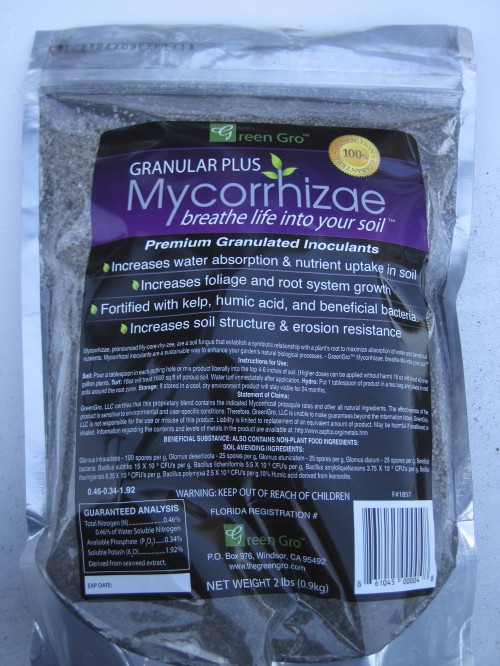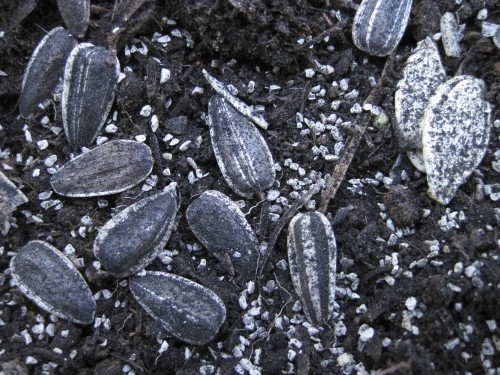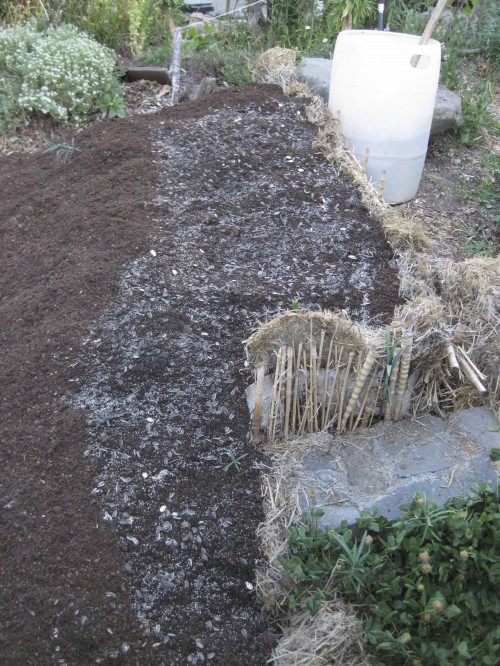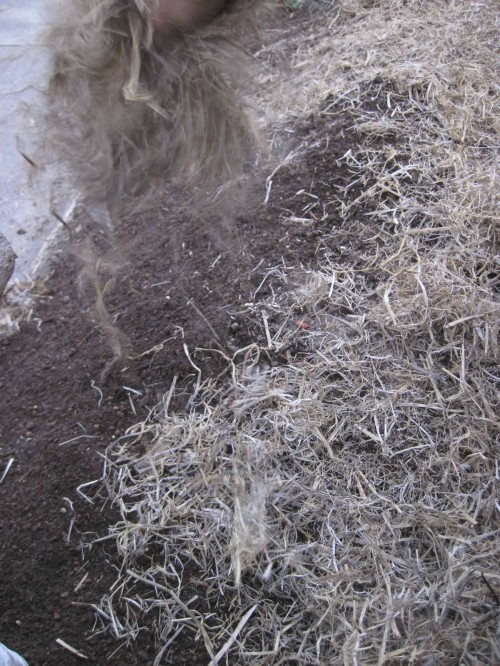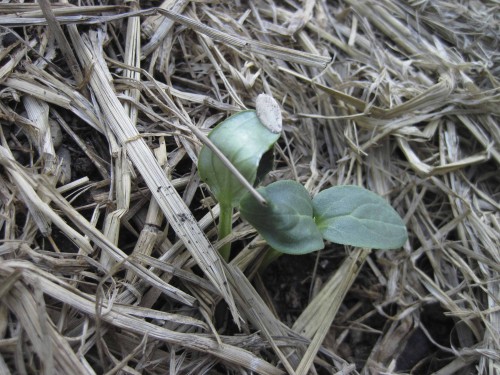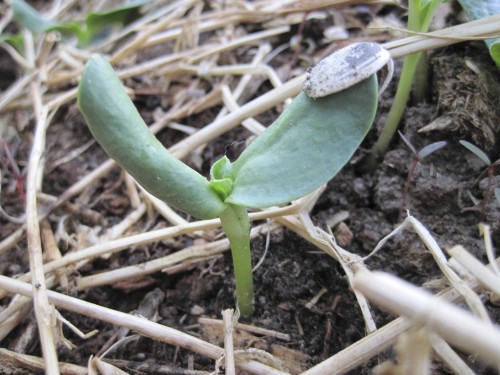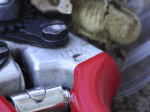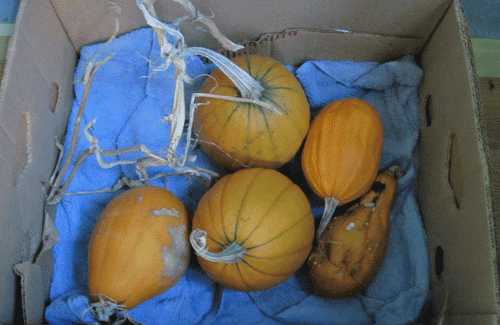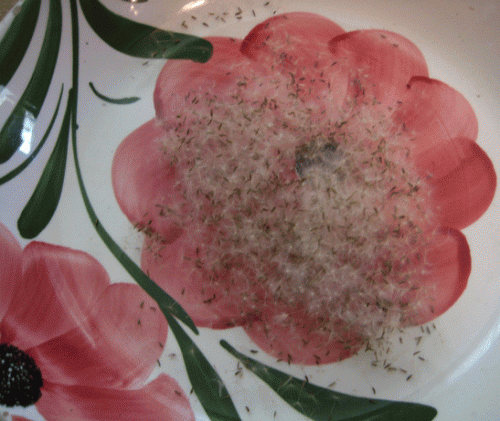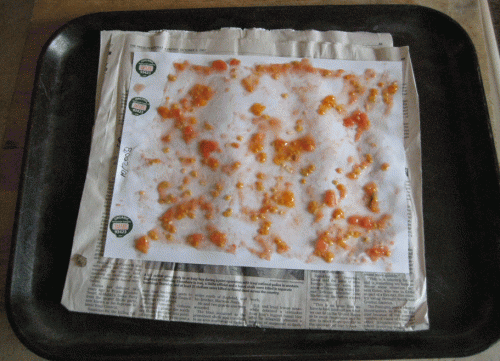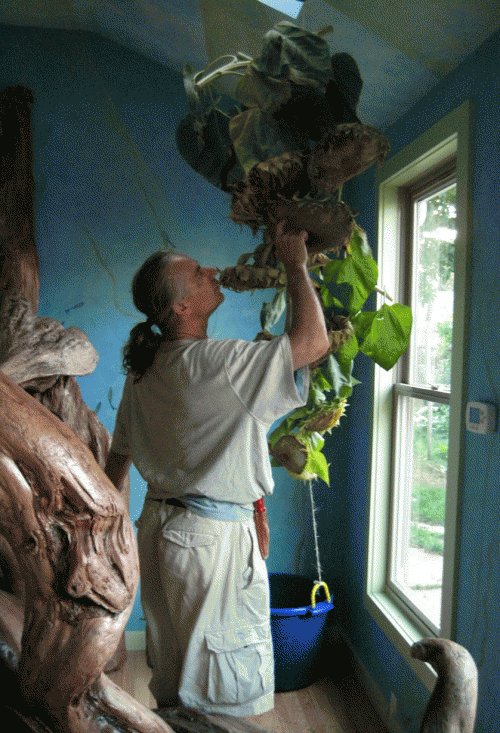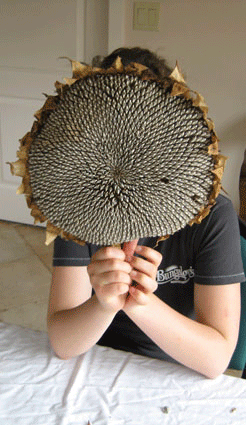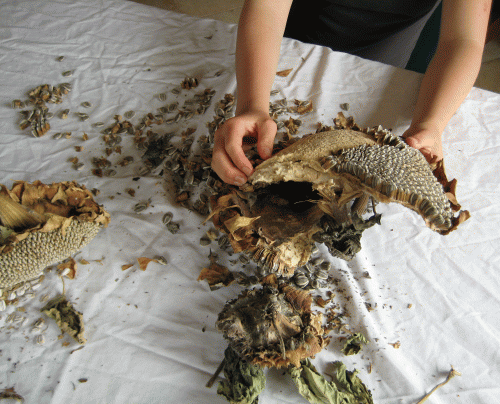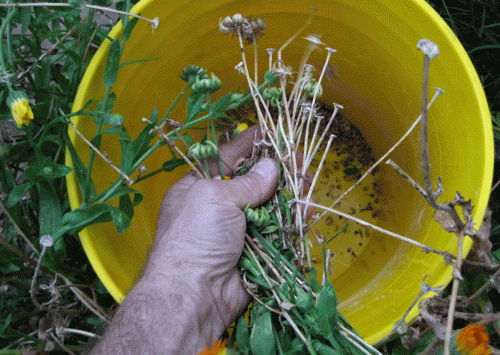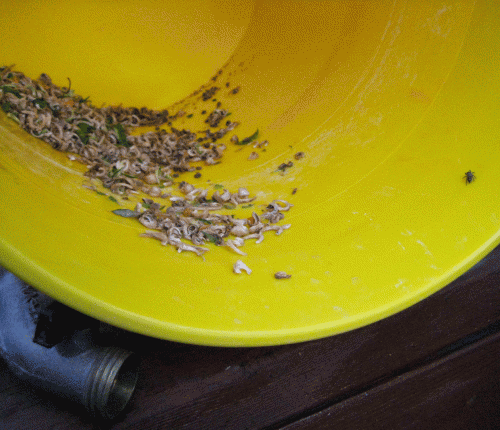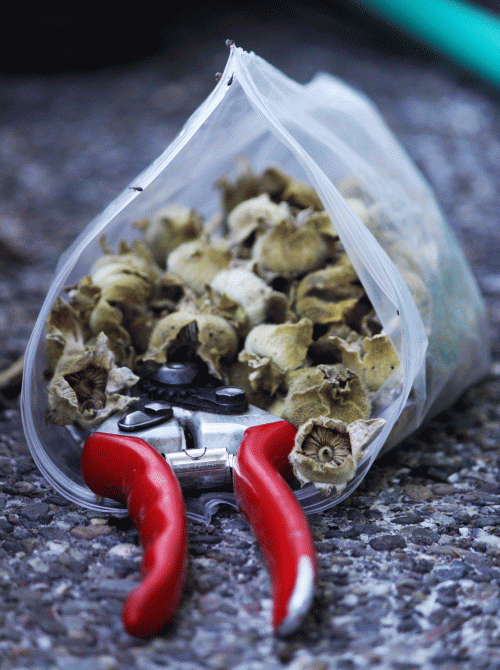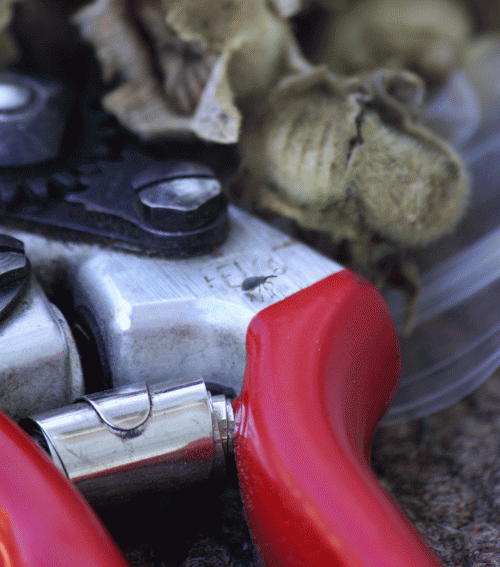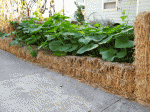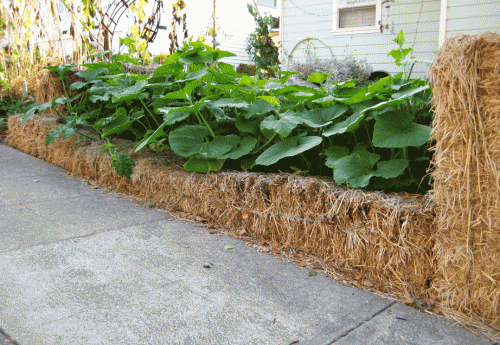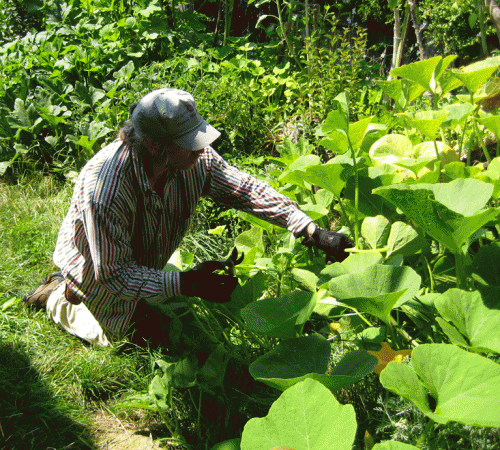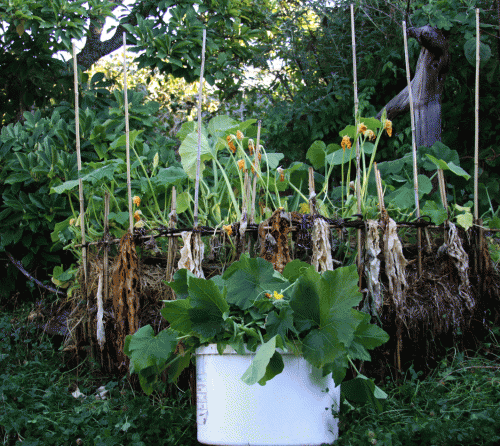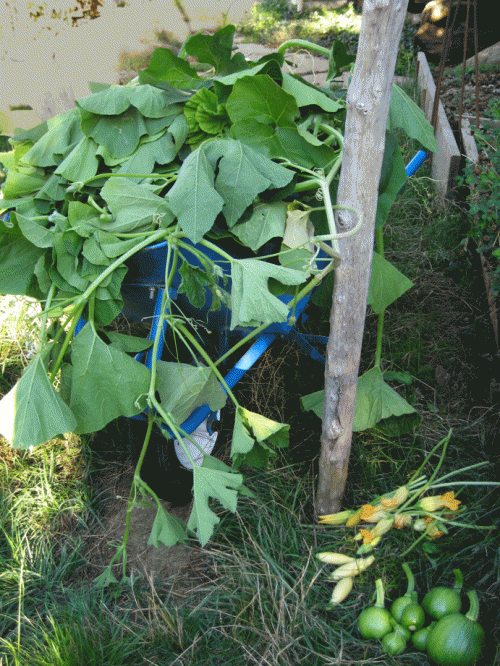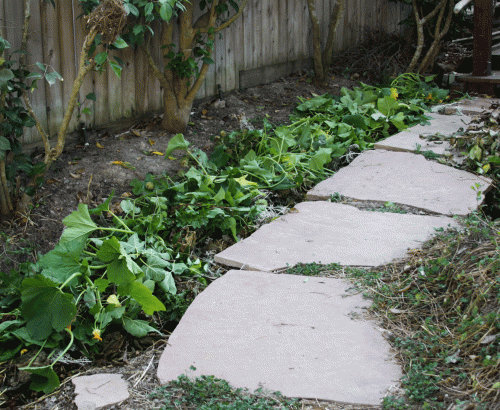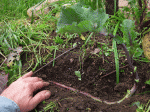
You have landed on Day 3 in this 5-day series of videos depicting propagation of tree collard cuttings. Enjoy!
First a video re “Collard Propagation”. Today’s video is part 3 of 5 (1/day) for the series! THEN some collard tree pics (below the video):
Tree Collard Propagation — 3 of 5 videos
Transplanting Tree Collard Cuttings for Propagation (pics):
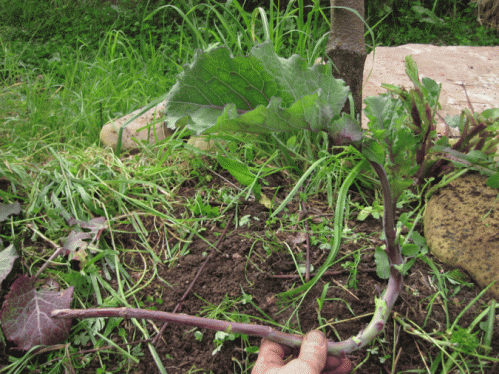
Transplanting tree collard cutting - 1 of 4. Note the bend in the cutting. Could be very difficult to stab this cutting into the ground and keep the leaves off the soil-mulch surface. But working with what we have, we'll lie the cutting on its side. The extra length of cutting (not pruning it back because of the bend) will allow more root development and better ensure propagation.
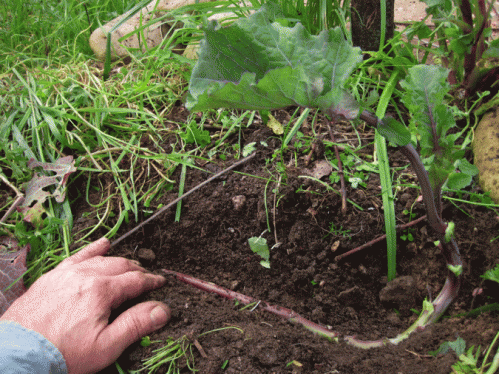
Transplanting tree collard cutting 2 of 4. Perfect fit for this tree collard cutting that has two 90-degree bends in it. Permaculture principle #1 = the problem is the solution. Because of its twists and turns, this cutting has primo real estate in the topsoil layer – look at how well the cutting, or new root system travels horizontally, along the rich microbe-abundant topsoil layer.

Transplanting tree collard cutting - 3 of 4. The topsoil layer is returned over the cutting. Leave it as you found it. The soil microbes have had a heck of a day (I hate moving!), but they will get a second chance at thriving, alongside the transplanted tree collard cutting. The green manure (boring people call them “weeds”) are also pushed back into place with the lightly packed topsoil. Those plants/greens are going to be mulched over (next pic) so they will boost the existing community of soil microbes. And the soil microbes and the tree collard cutting’s new roots will live happily ever after.
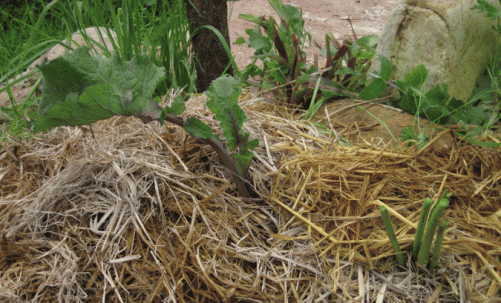
Transplanting tree collard cutting - 4 of 4. Rice straw (old, perhaps last year's bale) is used to mulch over the tree collard cutting. Moisture retention is critical while the cutting decides to thrive or not. Note the chop-and-drop'ed dock plant (lower right); see text below re chop-and-drop.
Note the chop-and-drop’ed dock plant in the above pic (lower right). Sure it could have been ripped out while I was digging in the transplant. BUT, I would rather have the dock plant’s large, voluptuous leaves soak in the sun’s rays, create carbon (sugars) and other organic matter in the form of more leaves and a more developed root system. THEN, I will come along again (for the umpteenth time!) and demand that the plant start all over. Besides perhaps emotionally scarring Dock, the leaves I’ve collected can be used to make mulch, compost, or salad. The root system that was supporting all that leaf growth dies back; the leaves are no longer feeding it. Those died-back roots then become food for the soil as well as organic material that retains moisture for the new roots to come as the dock plant regrows.
Chop and drop video by TrevorsGarden.
Happy collard propagation and see you tomorrow.
Tony

